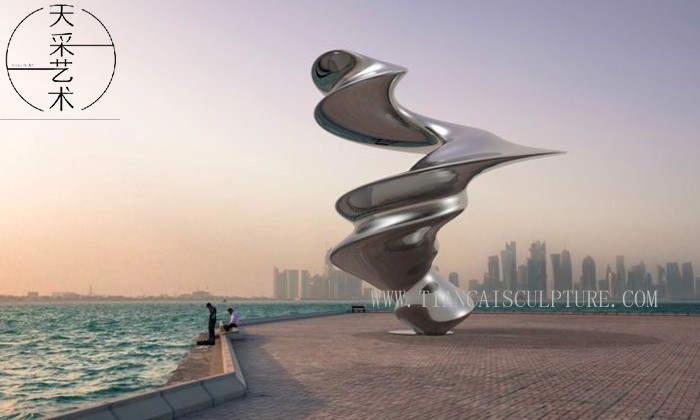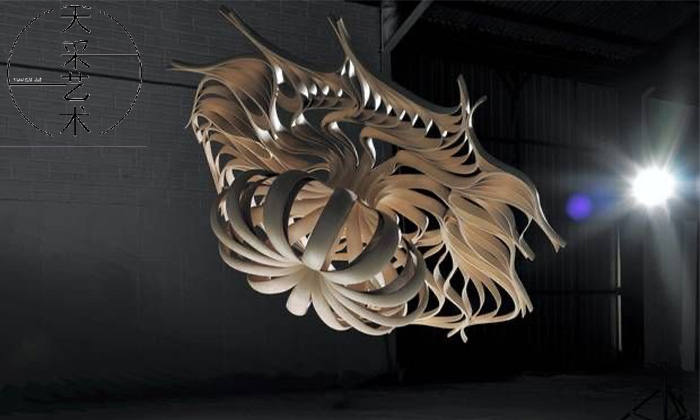 Sep 05, 2024
Sep 05, 2024
В последние годы, как фабрика, специализирующаяся на изготовлении скульптур на заказ, мы стали свидетелями и участниками процветающего развития искусства металлической скульптуры в глобальном масштабе. Благодаря постоянным инновациям в современном искусстве, Металлическая Скульптура постепенно становится высоко ценимой художественной силой. От смелого и авангардного абстрактного экспрессионизма в Соединенных Штатах, любви к механически наклонным стальным скульптурам до элегантных и очаровательных новых художественных стилей во Франции, отдающих предпочтение изящным и тонким бронзовым произведениям, и далее к классическому и сложному влиянию Возрождения. В Италии, и даже традиционные элементы, пропитанные древним культурным наследием Китая и Японии, восхищение китайцев блестящими и очаровательными скульптурами из нержавеющей стали, металлическая скульптура демонстрирует свое уникальное очарование, становясь глобальным художественным языком, выходящим за пределы культурных границ. Это все больше становится общим занятием среди любителей искусства во всем мире. Помимо нержавеющей стали, наши металлические скульптуры также включают в себя такие материалы, как кованое железо, медь, алюминий и другие. Каждый материал обладает своими уникальными характеристиками и очарованием: кованое железо подчеркивает суровую и тяжелую индустриальную эстетику, медь создает теплую и загадочную классическую атмосферу, а алюминий демонстрирует легкое и современное чувство моды.Следуя этой тенденции, наша фабрика постоянно совершенствует свое мастерство изготовления металлических скульптур, стремясь предоставить клиентам более качественные индивидуальные услуги. Как фабрика, специализирующаяся на персонализации скульптур, мы лично стали свидетелями и участниками процветающего развития этого вида искусства в глобальном масштабе. Глубоко понимая эстетические предпочтения металлических скульптур в разных странах и регионах, мы также постоянно совершенствуем наши методы мастерства, прилагая усилия, чтобы предложить клиентам еще более выдающиеся индивидуальные услуги. Прежде всего, металлические материалы сами по себе обладают сильным визуальным воздействием. Будь то холодная и твердая сталь, теплая и блестящая медь или алюминий или ослепительная нержавеющая сталь, каждый тип металла может придать скульптурным произведениям уникальное очарование. Благодаря изысканным методам обработки металлические скульптуры также могут демонстрировать более разнообразный спектр текстур поверхности и визуальных эффектов. Например, Скульптуры из нержавеющей стали производимые на нашем заводе, включают в себя такие процессы, как чистка щеткой, сварка, полировка и зеркальная отделка. Каждая техника может придать произведениям искусства разные характеристики: от минималистского и элегантного эффекта браширования до глянцевой полированной поверхности и высокотехнологичной зеркальной отделки, предоставляя клиентам более широкий выбор.Кроме того, металлические скульптуры также предлагают большую универсальность в своем скульптурном языке. Металлические материалы могут умело демонстрировать широкий спектр выражений: от плавных и элегантных абстрактных форм до реалистичных и ярких реалистичных изображений. Это позволяет художникам раскрыть свой творческий потенциал и постоянно расширять границы традиционной скульптуры. Некоторые большие металлические скульптуры либо создают красивые абстрактные формы с использованием таких материалов, как нержавеющая сталь, либо создают реалистичные формы. Скульптуры животных использование кованого железа, и все это демонстрирует безграничные возможности металлической скульптуры. Интересно, что разные страны и культуры имеют уникальные эстетические предпочтения и творческие стили, когда дело касается металлической скульптуры. Вот несколько конкретных примеров:Абстрактный экспрессионизм: Соединенные Штаты известны своим стилем абстрактного экспрессионизма, где металлические скульптуры часто воплощают смелые формы, линии и структуры, как это видно в таких работах, как мобильные скульптуры Александра Колдера. Минимализм: Минималистский стиль также занимает место в американской металлической скульптуре, характеризующейся простотой, геометрическими формами и четкими линиями, примером которых являются работы Ричарда Серры. Франция:Ар-нуво: французские металлические скульптуры часто демонстрируют черты стиля модерн, демонстрируя элегантные линии и цветочные мотивы, такие как бронзовые скульптуры Эмиля Галле. Сюрреализм: Металлические скульптуры во Франции также находятся под влиянием сюрреализма, представляя сюрреалистические формы и воображение, как это видно в металлических скульптурах Сони Делоне. Италия:Влияние эпохи Возрождения: итальянские металлические скульптуры находятся под влиянием периода Возрождения, часто демонстрируя характеристики классицизма и сложные методы скульптуры, как это видно в бронзовых скульптурах Микеланджело. Современный итальянский дизайн. Современные итальянские металлические скульптуры подчеркивают простой и элегантный дизайн, например, современные скульптуры из нержавеющей стали Джованни Карли. Китай:Традиционные китайские мотивы: китайские металлические скульптуры часто сочетают в себе традиционные культурные элементы, такие как драконы, фениксы и другие благоприятные узоры, демонстрируя очарование традиционного китайского искусства. Современное китайское искусство: произведения современной китайской металлической скульптуры разнообразны: некоторые из них преследуют современность и абстракцию, в то время как другие сосредоточены на особенностях народного искусства и мастерстве. Япония:Эстетика дзен: японские металлические скульптуры часто воплощают эстетику дзен, будучи простыми, элегантными, подчеркивая природу и спокойствие, как это видно в работах из железа Кодзо Мацумото. Современная японская скульптура. Современные японские металлические скульптуры разнообразны: некоторые сочетают в себе традиционные культурные элементы, а другие следуют авангардному дизайну и технологическим инновациям. Эти примеры демонстрируют разнообразие и уникальность стилей металлических скульптур в разных странах, отражая творческое использование металлических материалов и эстетические поиски художников со всего мира. Например, в Соединенных Штатах металлические скульптуры часто демонстрируют характеристики абстрактного экспрессионизма и минимализма, демонстрируя смелые формы, линии и структуры. Между тем, французские металлические скульптуры сочетают в себе элементы движения модерн и сюрреализм, демонстрируя элегантные и творческие линии. В Италии металлические скульптуры часто находятся под влиянием периода Возрождения, воплощая классические черты и изысканные техники скульптуры. С другой стороны, современная итальянская металлическая скульптура подчеркивает минималистскую и элегантную эстетику дизайна. В то же время металлические скульптуры в Китае и Японии воплощают в себе свои давние традиционные художественные характеристики. Китайские произведения искусства часто включают в себя благоприятные мотивы, такие как драконы и фениксы, а японские произведения воплощают простоту и элегантность эстетики дзен. Эта глобальная перспектива разнообразия, несомненно, предоставляет художникам более широкое творческое пространство. Замечено, что современное искусство все больше подчеркивает междисциплинарную интеграцию, при этом клиенты из разных стран начинают ломать традиционные материальные предпочтения и искать более инновационные и прорывные скульптурные формы. Например, умелое сочетание меди с нержавеющей сталью или использование алюминия для создания уникальных абстрактных форм обогащает выразительный диапазон металлической скульптуры. В целом, металлическая скульптура становится универсальным художественным языком, выходящим за пределы культурных границ и находящим широкий отклик среди любителей искусства во всем мире. Как фабрика, специализирующаяся в этой области, мы продолжим поддерживать мастерство, совершенствовать наши технические навыки и создавать еще более выдающиеся изделия по индивидуальному заказу для наших клиентов, способствуя процветающему развитию этого вида искусства в глобальном масштабе.Мы являемся фабрикой скульптур из Китая, специализирующейся на изготовлении скульптур из различных материалов по индивидуальному заказу.Наш сайт: www.tiancaisculpture.com Связаться с нами заказать любую скульптуру по вашему желанию

